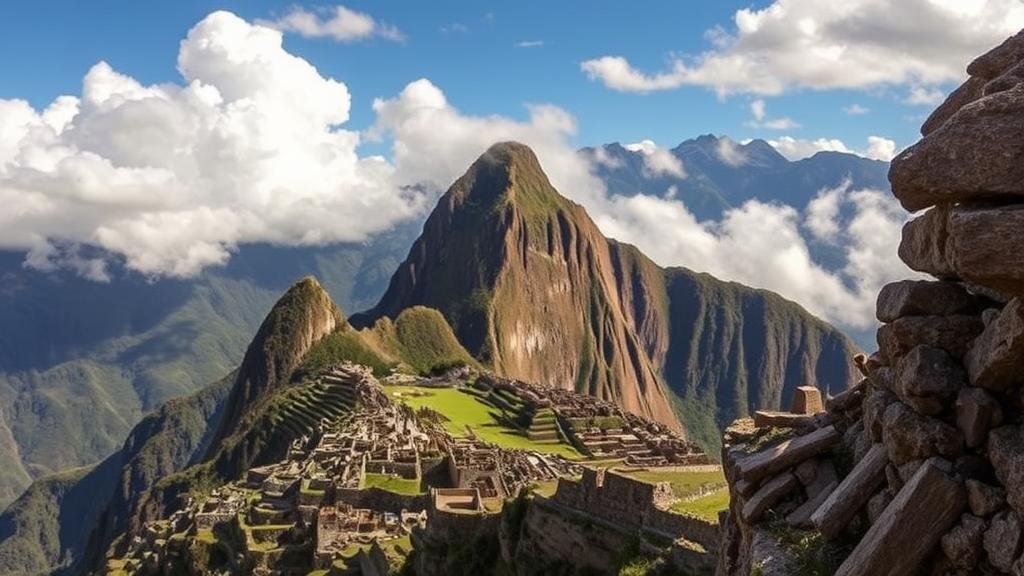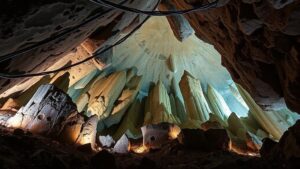Scaling the Andes to uncover “cities in the clouds” left by ancient builders.
Scaling the Andes: Uncovering Cities in the Clouds
Nestled in the heart of South America, the Andes mountain range is not just one of the longest mountain chains in the world but also a treasure trove of ancient history. For centuries, these towering peaks have concealed remarkable remnants of civilizations that flourished thousands of years ago. Among the most intriguing discoveries are the so-called cities in the clouds, often regarded as the architectural feats of ancient builders who thrived in these rugged terrains.
The Geography of the Andes
The Andes extend over 4,300 miles (7,000 kilometers), spanning seven countries: Venezuela, Colombia, Ecuador, Peru, Bolivia, Chile, and Argentina. range varies in elevation, with many areas exceeding 16,000 feet (4,880 meters). This diverse geography creates microclimates, which support various ecosystems. These conditions posed significant challenges to ancient inhabitants who constructed enduring settlements at great heights.
Historical Context of Ancient Civilizations
The Inca Empire (1438-1533) is the most well-known civilization associated with these heights, but prior cultures such as the Tiwanaku and Wari set the stage for its rise. Inca people constructed vast road networks, sophisticated agricultural terraces, and monumental structures, demonstrating advanced engineering and understanding of the environment.
- The Tiwanaku civilization thrived around 300 AD near Lake Titicaca, utilizing unique agricultural methods, including raised-field farming.
- The Wari culture (600-1100 AD) is known for its urban planning and the creation of extensive road systems that integrated various ecological zones.
Cities in the Clouds: Machu Picchu and Beyond
Machu Picchu is the most famous of the cities in the clouds, often depicted in photographs that capture its spectacular location and stone structures. Discovered by Hiram Bingham in 1911, this 15th-century site remains a symbol of Inca mastery over their environment. Elevating approximately 7,970 feet (2,430 meters) above sea level, it features agricultural terraces, intricate water management systems, and temples dedicated to deities.
But, Machu Picchu is not the only remarkable site found in the Andes. Other lesser-known but equally fascinating locations include:
- Choquequirao: Often referred to as the sister city of Machu Picchu, Choquequirao lies at an elevation of 10,000 feet (3,048 meters) and features similar architectural designs.
- Huánuco Pampa: A strategic distribution center for the Incas, it offers a glimpse into urban planning and agricultural practices in the highlands.
- Raqchi: Known for its remarkable Temple of Wiracocha, evidence here suggests a blend of both religious and agricultural functions.
Engineering Marvels: Adaptations to Challenge
The construction of these cities demonstrates extraordinary ingenuity. Ancient builders adapted their techniques to the harsh mountain environment. For example, they developed terraces to reduce soil erosion and maximize arable land, helping communities to sustain their populations at high elevations. Statistics indicate that, at its peak, the Inca Empire had over 25,000 miles (40,000 kilometers) of paved roads connecting these settlements.
Evidence from archaeological excavations shows that these civilizations also constructed sophisticated hydrological systems to manage water resources. These adaptations allowed them to thrive in altitudes that modern agriculture often finds challenging.
Exploration Today: Archaeological and Ecotourism Efforts
In recent years, increased interest in the Ancestral Andean civilizations has spurred both archaeological exploration and ecotourism initiatives. Researchers are employing non-invasive techniques, such as LiDAR technology, to uncover hidden structures beneath dense vegetation. This technology has led to the discovery of multiple agrarian and urban layouts previously unbeknownst to modern explorers.
Plus, the popularity of sites like Machu Picchu has fueled ecotourism, promoting sustainable practices that honor these ancient cultures. These initiatives provide insights into Inca life while contributing to the local economies. In 2019, over 1.5 million tourists visited Machu Picchu, underscoring the site’s enduring appeal.
Actionable Takeaways
For those looking to explore the wonders of the Andes and the cities in the clouds, consider the following:
- Research different Inca sites and their historical significance to deepen your understanding before visiting.
- Support sustainable tourism practices by choosing eco-friendly tour operators that respect and protect local cultures and environments.
- Visit lesser-known sites to experience the rich history without the crowds.
Scaling the Andes to uncover these ancient cities offers a glimpse into the past and a deeper appreciation for the resilience of human ingenuity. Each stone, terrace, and temple tells a story of civilizations that thrived high above the clouds, leaving an enduring legacy for future generations to explore.



